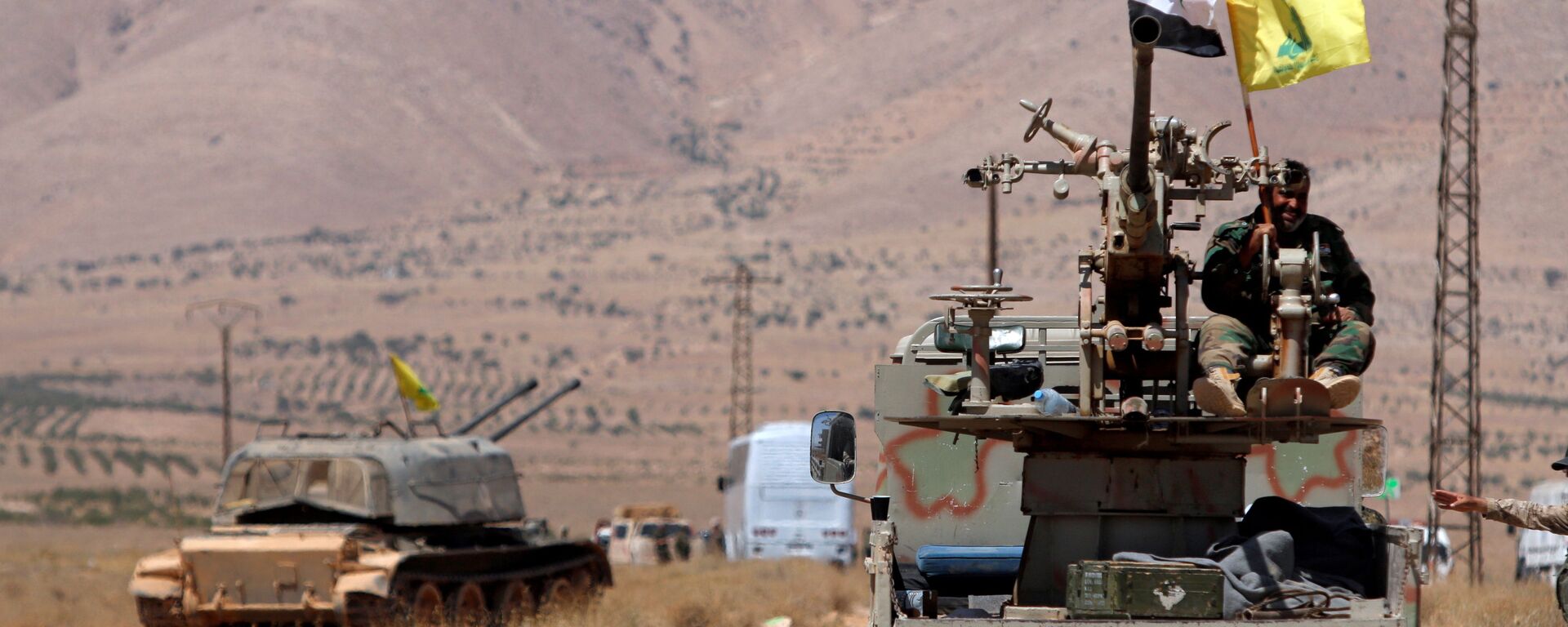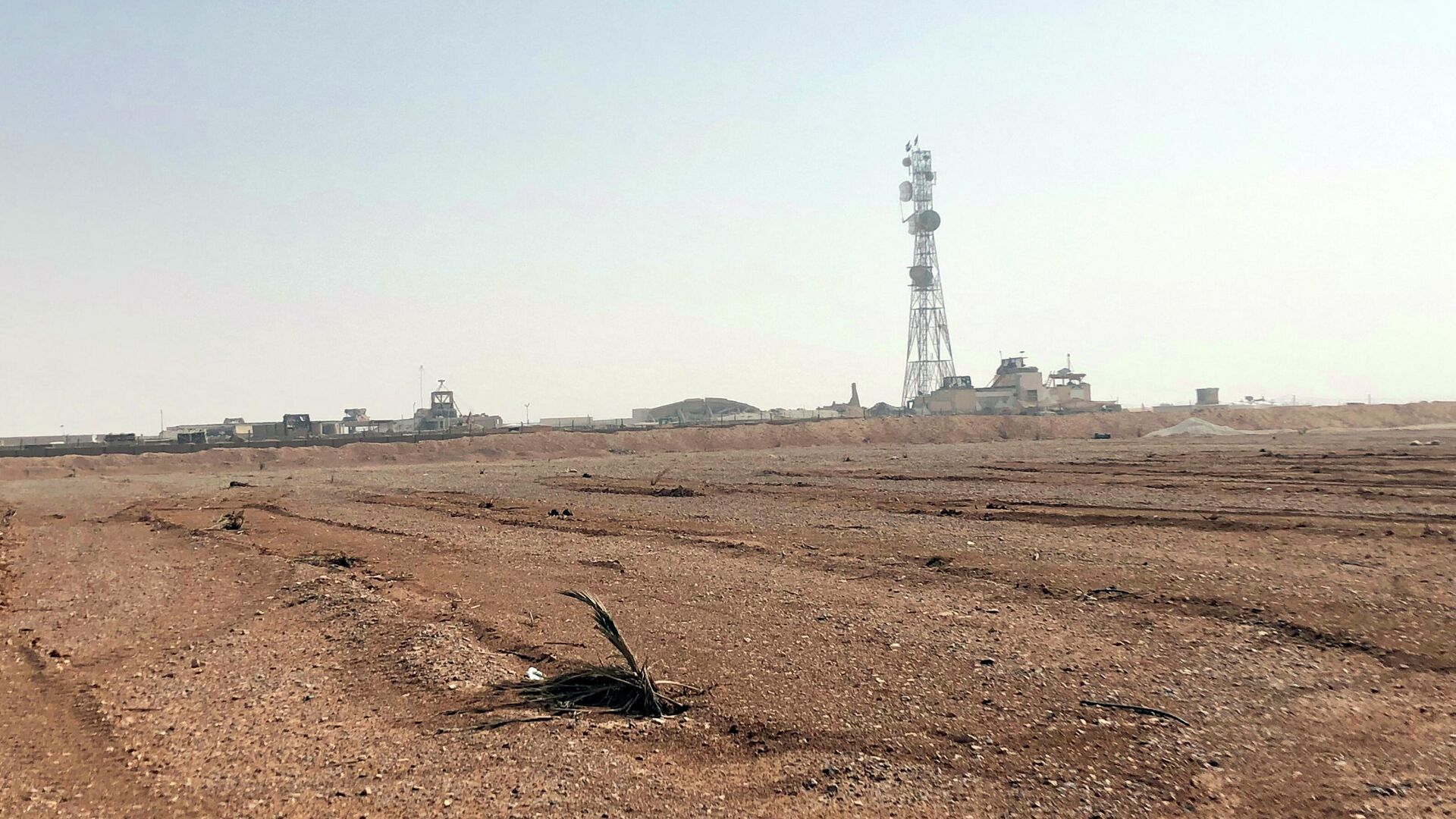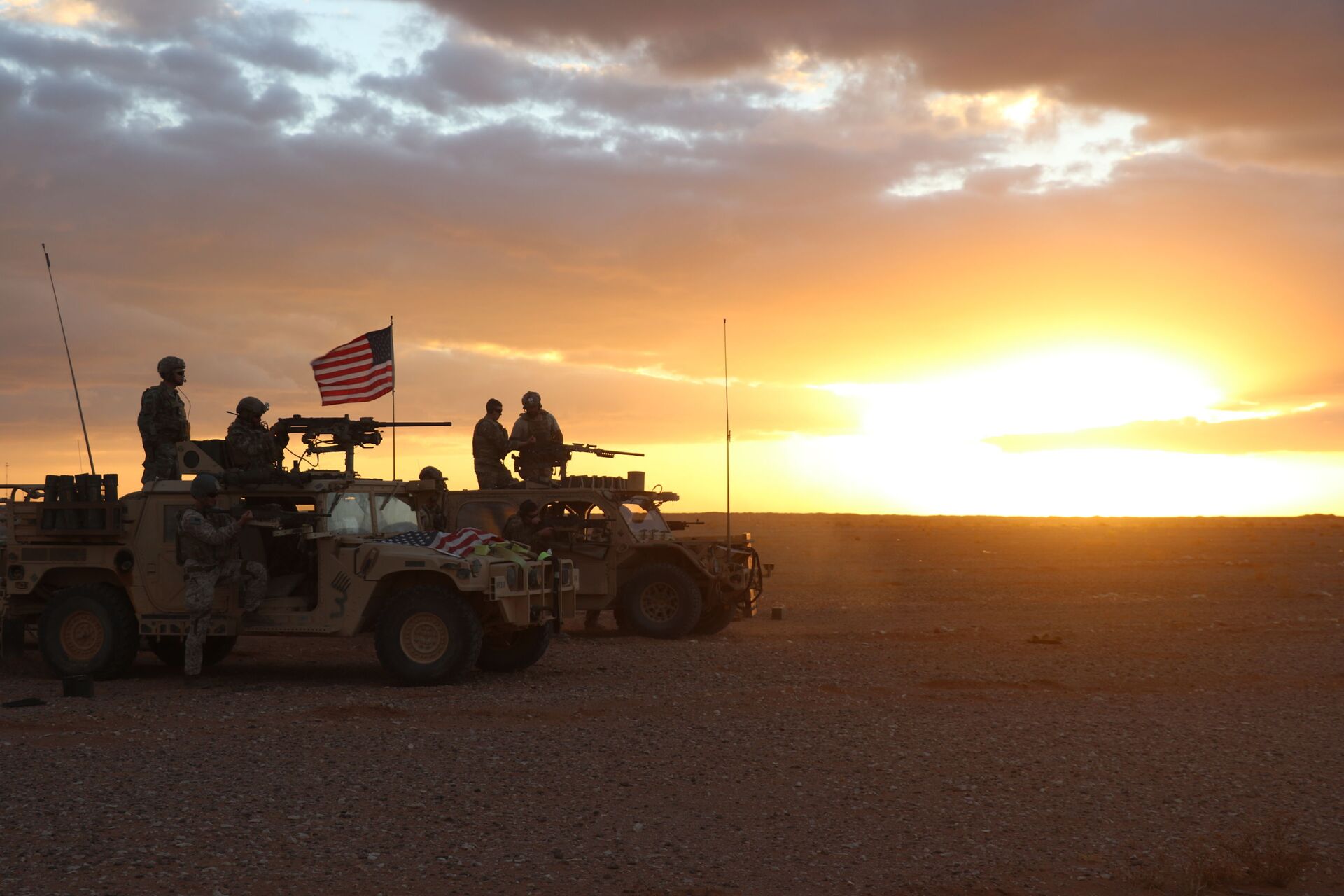https://sputnikglobe.com/20211026/at-tanf-base-iran-may-have-backed-drone-attack-on-us-in-syria-american-officials-allege-1090211995.html
At-Tanf Base: Iran May Have Backed Drone Attack on US in Syria, American Officials Allege
At-Tanf Base: Iran May Have Backed Drone Attack on US in Syria, American Officials Allege
Sputnik International
Last week’s attack on at-Tanf, which hasn't been claimed by any group, came in the wake of airstrikes against several locations near the ancient Syrian town of... 26.10.2021, Sputnik International
2021-10-26T08:12+0000
2021-10-26T08:12+0000
2023-01-08T16:46+0000
us
israel
iran
airstrike
news
attack
daesh
base
palmyra
world
https://cdn1.img.sputnikglobe.com/img/07e5/0a/1a/1090210558_0:254:3189:2048_1920x0_80_0_0_f3eeec7aa9b3b5c4e4e148e321844268.jpg
The AP news agency has quoted unnamed US officials as claiming that Iran could have resourced, facilitated, and encouraged last week’s drone attack on the at-Tanf base in southern Syria, where American servicemen are stationed.The remote base, located along the M2 Baghdad-Damascus highway near Syria's border with Iraq and Jordan, has been held by American troops since early 2016, when the base was used to train so-called "moderate rebels" fighting against the Syrian government of President Bashar Assad.According to the sources, at least five Iranian UAVs laden with explosive charges were involved in the attack, which purportedly hit both US service members and Syrian opposition forces.The claims come amid reports that the attack was conducted by “Syria’s allies”, an apparent nod to Iran-backed groups, who allegedly retaliated against an earlier airstrike on the Syrian town of Palmyra.A spokesperson for the US Central Command, in turn, told Sky News Arabia last week that initial assessments suggested "Iran-backed militias" had attacked the at-Tanf base.This followed the command of the Allied Operations Room of Syria, the pro-Syrian, anti-Daesh* alliance of forces that includes advisers from Hezbollah and Iran's Islamic Revolutionary Guard Corps (IRGC), pledging to respond in kind to the Palmyra attack.At least one Syrian soldier was reportedly killed and three others injured in what Damascus claimed was an Israeli airstrike on Palmyra that took place on 14 October. The Israeli military did not comment on the issue.The Biden administration has staged several retaliation airstrikes against Shiite militias in Syria since taking office in January, claiming the right of self-defence after rocket attacks were launched against US forces or bases housing American troops.Damascus has repeatedly underscored that the presence of US troops in Syria is illegal because they were never invited for deployment and the US does not have a relevant mandate from the UN Security Council. The Pentagon justifies the deployment of the US contingent in Syria by asserting that they are there to ensure the "enduring defeat" of Daesh* terrorists.*Daesh (ISIL/ISIS/Islamic State), a terrorist group outlawed in Russia and many other countries.
https://sputnikglobe.com/20211014/syrias-anti-daesh-allies-vow-to-respond-to-alleged-israeli-us-aggression-over-palmyra-1089924626.html
israel
iran
world
syria
Sputnik International
feedback@sputniknews.com
+74956456601
MIA „Rossiya Segodnya“
2021
Oleg Burunov
https://cdn1.img.sputnikglobe.com/img/07e4/09/0b/1080424846_0:0:2048:2048_100x100_80_0_0_3d7b461f8a98586fa3fe739930816aea.jpg
Oleg Burunov
https://cdn1.img.sputnikglobe.com/img/07e4/09/0b/1080424846_0:0:2048:2048_100x100_80_0_0_3d7b461f8a98586fa3fe739930816aea.jpg
News
en_EN
Sputnik International
feedback@sputniknews.com
+74956456601
MIA „Rossiya Segodnya“
Sputnik International
feedback@sputniknews.com
+74956456601
MIA „Rossiya Segodnya“
Oleg Burunov
https://cdn1.img.sputnikglobe.com/img/07e4/09/0b/1080424846_0:0:2048:2048_100x100_80_0_0_3d7b461f8a98586fa3fe739930816aea.jpg
us, israel, iran, airstrike, news, attack, daesh, base, palmyra, world, syria
us, israel, iran, airstrike, news, attack, daesh, base, palmyra, world, syria
At-Tanf Base: Iran May Have Backed Drone Attack on US in Syria, American Officials Allege
08:12 GMT 26.10.2021 (Updated: 16:46 GMT 08.01.2023) Last week’s attack on at-Tanf, which hasn't been claimed by any group, came in the wake of airstrikes against several locations near the ancient Syrian town of Palmyra in mid-October. At least one Syrian soldier was reportedly killed in the strikes, which Damascus said was the work of Israel.
The AP news agency has quoted unnamed US officials as claiming that Iran could have resourced, facilitated, and encouraged last week’s drone attack on
the at-Tanf base in southern Syria, where American servicemen are stationed.
The remote base, located along the M2 Baghdad-Damascus highway near Syria's border with Iraq and Jordan, has been held by American troops since early 2016, when the base was used to train so-called "moderate rebels" fighting against the Syrian government of President Bashar Assad.
The officials asserted that it was Iranian unmanned aerial vehicles (UAVs) that carried out the attack on at-Tanf, but that the drones were not launched from the Islamic Republic’s territory.
According to the sources, at least five Iranian UAVs laden with explosive charges were involved in the attack, which purportedly hit both US service members and Syrian opposition forces.
The claims come amid reports that the attack was conducted by “Syria’s allies”, an apparent nod to Iran-backed groups, who allegedly retaliated against an earlier airstrike on the Syrian town of Palmyra.
A spokesperson for the US Central Command, in turn, told Sky News Arabia last week that initial assessments suggested "Iran-backed militias" had attacked the at-Tanf base.
CENTCOM later clarified to the BBC that “both unmanned aerial systems and indirect fire" were used against the base, adding that they “maintain the inherent right of self-defense and will respond at a time and place of our choosing”.
This followed the command of the Allied Operations Room of Syria, the pro-Syrian, anti-Daesh* alliance of forces that includes advisers from Hezbollah and
Iran's Islamic Revolutionary Guard Corps (IRGC), pledging to respond in kind to the Palmyra attack.
At least one Syrian soldier was reportedly killed and three others injured in what Damascus claimed was an Israeli airstrike on Palmyra that took place on 14 October. The Israeli military did not comment on the issue.

14 October 2021, 13:55 GMT
The Biden administration has staged several retaliation airstrikes against Shiite militias in Syria since taking office in January, claiming the right of self-defence after rocket attacks were launched against US forces or bases housing American troops.
Damascus has repeatedly underscored that the presence of US troops in Syria is illegal because they were never invited for deployment and the US does not have a relevant mandate from
the UN Security Council.
The Pentagon justifies the deployment of the US contingent in Syria by asserting that they are there to ensure the "enduring defeat" of Daesh* terrorists.
*Daesh (ISIL/ISIS/Islamic State), a terrorist group outlawed in Russia and many other countries.




